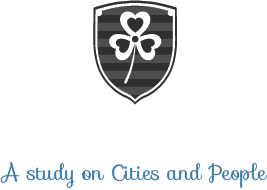How many is ‘many people’?
The Active City Center
In this entry i’ll try to figure out how many people can be expected to spend time outside in the active city center of a medium sized European city.
Conclusion
The answer to this question depends on the time of day and is divided up between outdoor restaurant sitters (private places) and public space sitters (public places). Applicable to cities with 80 000 – 180 000 population. There are more than 200 such cities in Europe outside of the Mediterranean region.
For private places ‘many’ people on uneventful july days are:
- 502-785 or more people, between 15:00-16:30 o’clock. (or about 0,36-0,58% of city population)
- 694-1120 or more people, between 17:30-19:00 o’clock. (or about 0,62-0,91% of city population)
- 748-1197 or more people, between 20:00-21:30 o’clock. (or about 0,56-0,87% of city population)
For public places ‘many’ people on uneventful july days are:
- 144-238 or more people, between 15:00-16:30 o’clock. (or about 0,13-0,20% of city population)
- 141-252 or more people, between 17:30-19:00 o’clock. (or about 0,12-0,21% of city population)
- 94-212 or more people, between 20:00-21:30 o’clock. (or about 0,08-0,18% of city population)
Observation
Creating an attractive urban core is a growing pursuit for many European cities today. It’s a way to attract new inhabitants, students, tourists and encouraging investments in general as well as creating a better quality of life for everyone.
One can get an idea about how attractive one’s urban core is by going out counting how many people spend time outside. While this is a quite straightforward and easy endeavour, what is more difficult to judge is whether the amount of people is big or small. We lack a way to compare our cities’ attractiveness to one another. I’ve tried to remedy this difficulty by creating scales of comparison for medium sized European cities with about 80.000-180.000 population. There are more than 200 such cities in the non-mediterranean part of Europe.
My chosen method was to travel to 19 medium sized European cities and simply count the amount of people spending time in each city’s urban core. Cities in Sweden, Denmark, The Netherlands, Germany, Austria and Italy are included in this study. The smallest city being Lund in Sweden, and the biggest being Odense in Denmark. Only Bolzano in Italy experienced a temperature above 30 degrees celsius, while the rest had a steady temperature of about 21 degrees celsius with sunny to semi-cloudy weather. Only Ingolstadt had an unfortunate shower of rain in the early afternoon, after which the weather significantly improved, hence the lack of one interval dataset for Ingolstadt. I counted during weekdays between three time intervals (as depicted in the graphs below). Let’s have a look at the results:


Let’s make an example using the late afternoon interval (17:30-19:00), using the imaginary city of Testburg with a population of 100.000. Testburg has 500 people (0,5% of city population) sitting in outdoor restaurants and 100 people (0,1% of city population) sitting in public places. If we compare this to the scale of comparison we can see that Testburg has a medium amount of people spending time outside in its urban active center. This example can be seen in the graph below:

Thus, this scale is a tool for comparing citys with a group of other similarly sized cities. All cities and data can been found further down this page.
Now that i’ve explained how the scale works and how it was assembled, it’s time to explain more about the criteria I used for gathering the data that is the foundation for this scale. I’ve mentioned that I count the amount of people in the urban core. What I mean when I talk about the urban core in this post is more close to what I choose to call the ‘active urban core’. The active urban core is the continuous part of the city where:
1. People actually spend time
2. People are invited to spend time. Even if there is nobody present. Such as an empty developed waterfront with sitting opportunities, or an empty outdoor restaurant seating.
Below are three images that exemplifies an inhabited active urban core, a uninhabited active urban core and a non-active urban core.

An inhabited active urban core. People spending time in the inner city.

An uninhabited active urban core. This area is part of the city center and clearly invites for people to sit, but nobody is currently occupying the space.

A non-active urban core. This generally marks the end of the active urban core. There are no opportunities to sit or spend time here. Nor are there any public storefronts.
After one have defined a city’s active urban core, usually by tracing its edges until one has encircled an area (see image below), it’s time to count the amount of people spending time outside. However, ‘outside’ is a problematic word and does not fully encompass what it is that we want to capture when we think about an attractive urban core. My definition of outside is a loose one, and I include anyone who contributes to the experience of the streets.
For example, what if we walk past a restaurant that does not have outdoor seating, but instead it has large open windows? Can you see the people ‘inside’? Can you hear the noise of utencils scraping against dinner plates, the mumbled conversations of dinner guests or smell the food? Can you feel the atmosphere of the inside spilling out on the street? Chances are then that this restaurant, despite not having outdoor seatings, contributes to the experience of the street. As such, the people inside should be counted as people being outside.

The defined active urban center of the city of Lund in Sweden. Yellow/purple dots are people sitting on outdoor restaurant seatings, while green dots are people spending time on public places. More on these maps in a later post.

A Biergarten in Ingolstadt. The people inside contributes directly to the street through sound, smell and atmosphere.

A big open window enables people on the street to hear, smell and feel the inside atmosphere. The people close to this window would be considered to be ‘outside’.
This marks the end of this entry. If you have any further questions please contact me by e-mail: [email protected]
Data
In the graphs below are all the data used in this entry from each of the 19 cities:




Keep in mind: One obvious shortcoming of this study is the failure to account for tourists. Some cities attract more tourists than others, especially during the month of July, during which the data was collected. However, July is the month with the most reliable weather, and as such, would yield me the most reliable results. Also, no festivals took place in July in the studied cities, which increases the comparability of the results.

